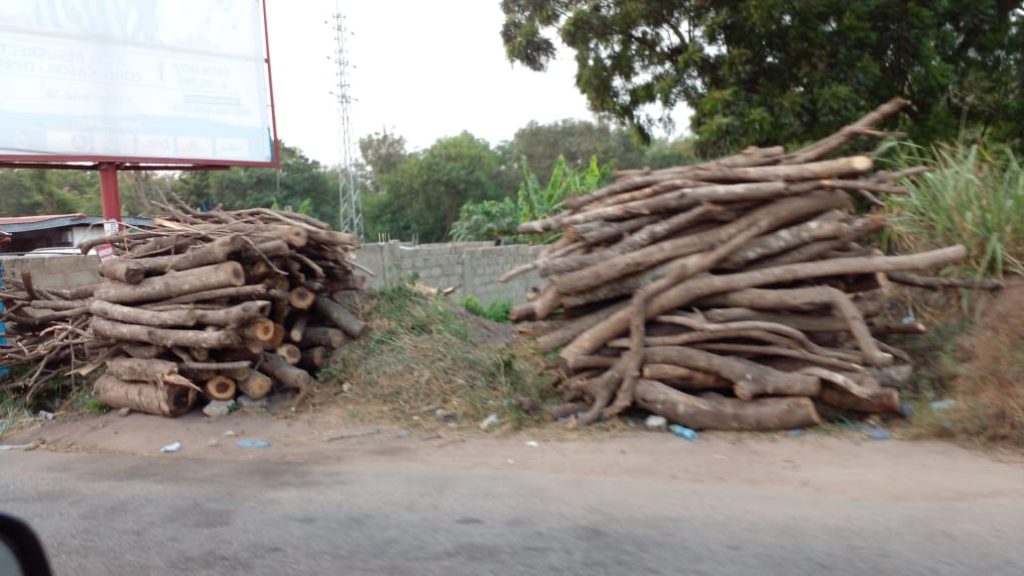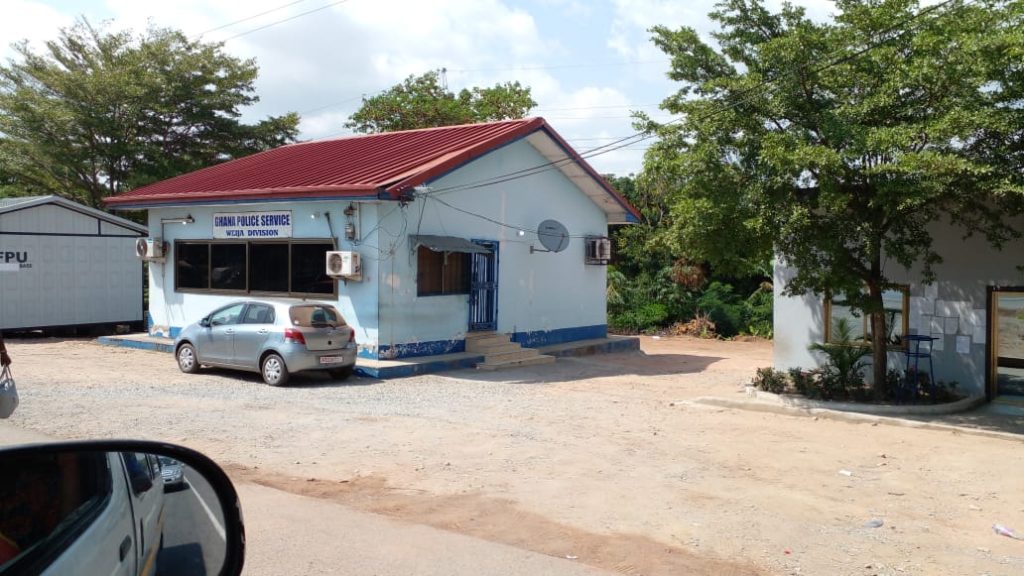By Issah Mohammed
Accra, June 14, GNA – While fishing at night might be a toast of many fisherfolks, fishers on the Weija reservoir regard night fishing as an escape from the discomfort of fishing at the peak time of pollution.
“When you are bathing or fishing inside(reservoir) during the day, our body itches so we normally go fishing at night when the water body is calm,” said Mr Andrews Tetteh-Kietey, a fisherman at Tomefa.
The Assistant Chief fisherman of the settler community located near Ngleshie Amanfro in the Ga South Municipal Assembly observes that the community ‘s life is dependent on the water body.
“Here we use ‘pure water’ (Sachet water) always for drinking. Sometimes when we fetch the reservoir water and the women want to use it for cooking, we treat it with alum to make the germs go down. But for the drinking we don’t use it,” he said.
Tomefa, which consists of fisherfolks from Ada in the Greater Accra Region, Winneba in the Central region as well as Tefle, Sokpe and Anlo all in the Volta region, is one of the fishing communities dotted around the Weija reservoir.
The reservoir, located about 17 km west of Accra, is about 14 km long, 2.2 km wide and has a total surface area of 38 km square with a mean depth of 5 metres.
It was formed in 1977 through the damming at the river mouth of the 116 km long River Densu which is sourced from the Atewa-Atwiredu mountain range in the Eastern Region of Ghana.
The Ghana Water Company Limited (GWCL) depends on the water body to averagely supply about 60 million gallons of water daily to residents mostly in the western part of Accra.
In recent times, the survival of the water body known to support aquatic life is under threat due to illegal mining (Galamsey) upstream of the Densu River.
Downstream, the water body is suffering from the effect of harmful human activities that occur within its buffer zone.
The devastation of the buffer is quite visible along the 2.6 kilometres stretch of the “Broadcasting” area to Kasoa toll booth on the N1 road which runs parallel to the southern bank of the reservoir.
A visit to the site showed that the vegetative cover once reminiscent of nature’s serenity and harmony has gradually become a den for man-made structures and human activities.
Daily vehicular traffic build-up has become a raison d’être for thriving commercial activities such as farming, hawking, welding, car renting, masonry, concrete slap making, gardening, pottery, carpentry, and auto mechanical engineering.

The need for space has forcefully led to encroachment, turning the buffer into scattered patches of brown plots of land, destroying habitats of rare plants and animal species.
Waste generated because of these commercial activities is gradually making its way into the water body.
A precarious situation is the conversion of the Toll Booth police post into a police station which has destroyed more protective cover to make way for a police station and parking space for impounded accident vehicles.
With piles of ready-to-be-carted harvested logs visible at vantage points along the stretch, it was detected that loggers ransack the area at will to cut down trees.

Meanwhile, environmentalists opine that the vegetation cover has served as a last line of defence in preventing sediments from a nearby mountain from contaminating the water quality of the reservoir.
The Akoasa Mountain, located on the southern fringe of the water body and next to the N1 road has gained notoriety for being ‘dangerously’ encroached and shedding heavy sediments in the form of clay soil and when mingled with floodwater it renders portions of the road become impassable, leading to gridlock.
A 2008 research, “Water Quality of the Weija Reservoir after 28 Years of Impoundment” conducted by K. A. Asante et al. identified anthropogenic activities, such as stone quarrying, and dumping of domestic wastes, run-offs from agricultural activities and the occurrence of algae, as contaminants in the reservoir.
While serving as a protective cover during the day to the water body, the unfenced riparian buffer at night equally protects mobile phone snatchers who pounce on oblivious commuters through the windows of moving vehicles.
The siting of a police station along the vegetative stretch has not prevented this nefarious activity from thriving, said Emmanuel Koomson, a hawker on the stretch of the road.

Mr Daryl Bosu, an Environmental Activist who advocates the preservation of Atewa forest from bauxite mining to protect the source of the Weija reservoir, said in an interview that the situation was overwhelming especially in instances where water banks had been converted into waste dump sites.
He called for the enforcement of planning laws and buffer zone policy saying, “it is one thing saying it is a buffer zone and it is another thing ensuring compliance and enforcement.”
“Right from the beginning, every Assembly close to the reservoir should have ensured that all activities respected the buffer zone” he added.
He also called on the Government to start looking beyond improving water distribution channels and focus on protecting watersheds and sources by making budgetary allocations for that purpose.

To forestall the destruction of water bodies such as the Korle lagoon, Kpeshie lagoon and Odaw river, Ghana in 2004, started a process of formulating a consolidated buffer zone policy which was eventually rolled out in 2013.
It was intended to protect, regenerate, and maintain the native vegetation around water bodies to improve water quality.
The policy stipulates that, except with the prior approval of the appropriate authorising agency, “the clearing or grubbing of existing vegetation; cutting of vegetation or trees; soil disturbance by practices such as grading and striping and the filling or dumping of waste” was prohibited.
It among other things, recommends the creation of a three-tier buffer zone for effective erosion control and halting of water quality degradation while outlining a 90-metre buffer for reservoirs.
It also banned the use, storage, or the application of pesticides, herbicides, and fertilizers, and the conversion of existing established vegetation from majority native to majority exotic species.
The District/Municipal Assemblies under the policy were required to ensure that buffer zone restoration was reflected in environmental planning initiatives, and where necessary, establish bylaws declaring buffer zones as “protected areas.”
Mr Stanley Martey, the Communications Manager of the Ghana Water Company Limited (GWCL), an entity responsible for managing the Weija dam, has however described efforts of the Assemblies as “negligible.”
He explained that the company was dealing with a phenomenon of buildings springing up and sand-winning activities taking place within the buffer zone under the purview of the Assemblies.
“If you go to Weija, there are trucks winning sand and strangely they are armed, and we have reported to the Assembly several times and they are not doing anything about it,” he added.
The negative development, he indicated has left the company with little spatial space for future expansions.
He added that “people have even put-up structures on our pipelines, and some are on hydrants, and it is the District Assemblies who should make sure that these things do not happen and whether they have the permit, you can’t even tell.”
The company, Mr Martey noted, also has a challenge of dealing with diverted sewage into the river which pollutes the water, requiring more chemicals for treatment at a prohibitive cost.
“When they put in their waste, it also enriches the alluvial soil which aids the speedy growth of aquatic weeds. The weed is an impediment to water extraction and affects water quality,” he said.
Dr Bob Alfa, Head of Planning at the Water Resource Commission (WRC), in an interview disclosed that work was ongoing for the formulation of a law on buffer zones to ensure strict enforcement and compliance with policy directives.
“We are drafting the legal document to be submitted to the Office of the Attorney General for onward submission to Parliament,” he said.
Generally, the policy he said has been less effective in protecting water bodies within the southwestern belt due to issues of illegal mining, which he described as “more of a national security issue than a regulatory issue.”
He recommended a policy review as far as ownership of lands within the buffer zones was concerned.
He explained that the land tenure system where lands belonged to individuals and families, made it difficult for persons to be restricted from beneficially using their lands for any activity.
At a recent press conference in February this year, traditional rulers of Weija called on the Government to pay compensation to the indigenes for acquiring 50,000 acres of land for the siting of the dam, over four decades ago.
They called for a clear boundary demarcation between the GCWL, Weija, Gbawe and Ngleshie Amanfro communities which lay claim to some areas within the buffer zone.
“GWCL is behaving like overlords of Weija lands, and this will not be tolerated any longer,” said Nii Danyinase, Weija Dzaasetse.
He further urged government to seed part of the vast land to the indigenes who have over the years experienced increasing population growth, adding that, “they should show us the boundary for us to know our no-go area.”
“We deny in no uncertain terms report that suggests that the traditional authority has given portions of the buffer to developers for sand winning. As responsible as we are, we can’t, and we won’t indulge in inhumane activities that will threaten the very existence of the dam” he added.
Mr Joseph Nyarni, the Municipal Chief Executive (MCE) of the Ga South Municipal Assembly, in an interview indicated that the local Assembly had not issued any permit for construction along the bank of the reservoir.
He however mentioned the lack of resources to protect the zone as a challenge since encroachers tend to return to the place after a demolishing exercise.
“We expect that when we sack them, the WRC should also come in and fence the area. We cannot make any move unless they are ready with the money to fence the place,” he said.
On the contention of ownership over the buffer by some traditional authorities, he also said it was creating problems for the Assembly hence, “you ask them (encroachers) who gave you the permission to put up this thing here and they say it is the chiefs.”
The Assembly, however, Mr Nyarni noted, was putting up a divisional office at Tuba for the relocation of the Toll Booth police station which is situated within the buffer zone.
“The facility is about 80 per cent complete and we are hoping that by June we should hand over the facility to them,” he said.
The moonlight was dingy as the fisherman from Tomefa paddled his canoe on the expansive dam. Soon, he disappeared into the darkness, exploring the water which could be more useful to Accra and Ghana but now on the brink of destruction.
GNA